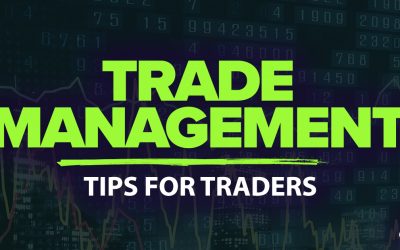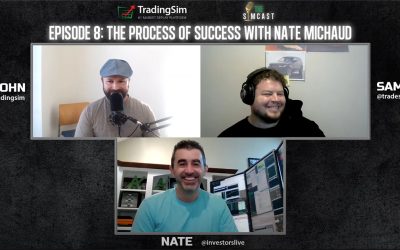Trading is about preventing stubbornness and having a solid plan but more importantly learning from mistakes.
Most traders rarely talk about losses but for me, I like to focus in on them and determine how to continually improve.
It’s not always incredible $20,000 + days.
This trade is a small rounding error of losses on the year but there are some great lessons here that I wanted to share with everyone to help prevent any similar situations from happening!
If you have any questions about the chat room, the DVD please just reach out to me directly!
At the beginning of the year I talked about my goals for 2014. These goals would have helped me save hundreds of thousands of dollars by cutting out just a handful of bad trading days. When I look back on trades over 2010-13, I realized that there were 4 or 5 major losses that put a big dent in my profits year to date.
I detail all of these losses in my streaming InvestorsLive Textbook Trading DVD
Back in May of 2013, we were at the brink of a major solar run. It was a Friday and the sector was closing strong into the weekend (SPWR, CSIQ, FSLR etc). I went over this trade in detail on my streaming DVD. I was up about $14,000 on the day on other trades and thought heck, why not flex a bit and push the envelope? Basically, I was too proud to take the $10,000 loss I was sitting on and decided to carry it over the weekend. Well, long story short, rather than eating the dumb trade at the close (and still being up a nice $4,000 on the day), I took my chances and a major breakout on Monday morning left me down $50,000 in one trade.
THE “OH SHIT HANDLE” TRADE RULE
With every loss comes a lesson and it’s whether or not you learn from that lesson that counts. For 2014 I gave myself a new rule when trading.
Much like when you’re in a car with someone driving erratically and you’re unsure of their next move, you grab hold of the “oh shit handle” to put your bottom back in the seat, preventing you from being thrown around and providing a bit more support for the next move.
Well, likewise I adopted the “oh shit number”. If I find myself trading erratically or making an unexpected move, I always reach for the escape “handle”; the buy/sell button (depending if you are long or short).
For me, my number is $10,000, I’ve respected that this year quite well. For other traders, this may be $300, $500, $1,000 or $5,000 as $10,000. It’s all relative to your account size, where you can come back from and what is a safe number that will keep you from becoming emotional or trading scared money. The reason I picked $10,000 is that amount of money takes me a day or two to make back – whereas if I let that number get towards a RSOL type trade it may take me a weeks or MONTHS to make back.
If you have a $5,000 account clearly that “oh shit” number is not $1000-2000 but should be much smaller. The reality is if you are trading higher than this, you’re trading too big and you are compromising your chance at becoming a good trader with that one trade. If you were to interview a bunch of failed traders I guarantee they can all tell you right off the bat that ONE trade took them out of the game.
To be successful at this game you need to have rules in place, know when to cut it back, relax and wait for the trades to come to you.
I know my limits, the second I start to get wild after a BIG run I wire out and I will NOT wire back in. I’ve rebuilt from small accounts countless times. To me it’s like a “time out” when you were a kid, you’re “grounded” and the only way to get back to where you were is back to basics, back to HOW you got to where you were. Once you get there sure, push the envelope within your means and keep firing away UNTIL your first day where either you test a rule and break it, get sloppy, start getting emotional or realize “WOW, I’m starting in with what used to be my max size, what am I doing?” then give yourself that time out, relax and regroup.
Eric (elkwood) and I talk daily: we share successes and failures and we’re always trying to get better at what we do, inspired by traders like Gregg (lx21) and Tom (ECNC1). Quite often we try to nail some of the same numbers they put up but without the same risk at hand – yea, it’s tough. They’re good but it’s always good to be inspired. The second it takes over your thought process though – go back to basics always!
The reason I bring this up is when I have a smaller account I am asking for wires from my broker on a regular basis. Countless times I’ve gone from $60-80k to $120-140k wire down to $70-80k push to $120k wire down and repeat. When my accounts are large and I am pushing a lot more size (likewise with Eric) I seem to go into a holding pattern, up down, up down, grinding along. During one of my many conversations with Eric we realized that every single time we wire down we’re asking for another wire in a few weeks – the times we don’t we’re stressed, pushing too hard and making less money despite having more money in accounts. Interesting isn’t it? Quite simple if you ask me.
Here’s an interview with Eric:
For me, trading should be fun. I don’t need to make millions upon millions. Do I want to? Yes, sure, but would I give up a few hundred grand a year for less stress and more free time? Absolutely – this is the beauty of the life of a trader – do what you want, when you want, answer to no one!
AFTER HOURS TRADING – NEW RULES
So – a few weeks after a solid push and large account (hadn’t wired in a while) I decided: screw it, I’ll trade after hours. As detailed on my streaming DVD, it would pay better to take a bunch of my friends to Foxwoods gamble, go to the club and eat a nice meal than to gamble in the market after hours.
Most of the time after hours – I am RIGHT after hours, really. But after going back and reviewing past trades and past years despite being right 70-80%+ or more of the time that 20-30% that I am wrong – oh man! Not good.
It’s just not worth it to trade after hours – my first recent sloppy trade was on Iron Mountain Inc. (IRM) that I mentioned on twitter; making a dumb mistake and ruining yet another good day.
Avoidable? Surely.
Started in small and rather than saying – I’m wrong, be done! I added and let it take me for a ride. An avoidable $10,000 trade.
Just last week Twitter, Inc. (TWTR) yes, we all know this one! Went up like a rocket ship before coming back towards $44s – I started short and had two other orders out there which I had canceled and the exchange or software held the orders (not my fault) and didn’t fill the orders for minutes despite the stock trading at higher levels – flash forward five minutes stock rips $2 bucks a share and guess what? I filled short at $2 bucks lower than the price it was trading at currently 🙂 Wonderful – TWO 2,000 share shorts immediately down $8,000.
No, not passing the blame – my broker actually is looking into it and confirmed it was not my fault and working with the exchange to figure something out — but that doesn’t take away my first short on it and trying to make a trade where there wasn’t.
Yet again, gambling into pops without a solid plan and, as I mentioned earlier, my STARTER size becoming what in past weeks was my FULL size.
Notice a trend? Yep, another after hours dumb trade.
Not only did I lose in Wedbush (which is the account I verify on profit.ly) I also lost in my ETC account which was 100% my fault without ANY exchange issues.
Between IRM and TWTR dumbness I’d be $40,000 richer with this one NEW rule I am giving myself. While I’m not going to write a blog post and say I will never trade after hours again (although I shouldn’t because we’re already here enough hours per day) I’m giving myself a new rule of trading – MAX SIZE AFTER HOURS IS STARTER SIZE DURING TRADING HOURS.
So if I’d typically trade 2,000 shares on name intraday I CANNOT trade more than 500 shares after hours – it’s a simple fix that when I do have that “itch” to trade after hours it more than likely will save me thousands. Truthfully my goal is to just shut it down at 4:00PM EST and be done but as we all know sometimes it’s easier said than done.
TRADING THE FRONT SIDE = NO CORE SHORT POSITIONS AND CORE IS NEVER MORE THAN A QUARTER SIZE
The last sloppy trade of the week I want to cover again easily avoidable was LOCO. I know not everyone reading this is a member but I would encourage all members to go back and read the chat logs – not patting my own back but I NAILED every entry on this sucker and every cover – TOP and BOTTOM each and every move, BUT I still lost money, WHY?
I held a friggin’ core short position and ate it!
I had this stocks number, trading in and our every parabolic nailing .50-.80/share pull back and covering waiting for it to start moving up again speed up and nail it again .70-1.00 pull back rinse and repeat repeat repeat.
Had I treated this as a day trade and not trying to predict that it was going to ‘peak’ short term I would have had some major profits.
A quick and easy fix here which I will add to my trading arsenal rules is if I am trading the front side of a move I will hold NO CORE POSITIONS. My definition of a core position is remaining net short or long on a name. Take for example LOCO where you think it’s going to end up fading at some point during the day and form a bearish bias thus giving yourself a reason to hold net short – what I did wrong here was I traded around 3,000-4,000 shares while flipping and nailing 1,000 share each time it ramped up.
ERROR: The core should be the 1,000 share size while your scalps should be 3-4 times the size of the core. 1,000 is a big position given the range on this stock so if reading this please by no means think that 1,000 shares is a safe amount to trade if unfamiliar with the stock! I am just showing you what I did and why it was wrong so you can learn from it!
In conclusion, it’s been an unreal year. My best to date. If I try to “make back” losses, I will just keep grinding lower and lower – REMEMBER: TRADE WELL AND PROFITS FOLLOW. I’ve gone back to basics. I had JUST wired out of my accounts last week so losing this the week after a wire leaves me with only $60-70k in each account which is WAY more than I need anyway to trade the way that I do.
Rules explored in this blog:
1.) Once I wire out, I do not wire back in
2.) No stubborn trades, but YES they do happen – have an “oh shit” number to stop NO MATTER WHAT that will NOT impact your emotional state of mind as a trader
3.) No after hours trading – but if I must, it’s a STARTER size only
4.) No core short positions on the front side of a move (I detail front side vs. back side on my streaming DVD)
I’ve been posting videos and ideas that I think will help traders – learn from my mistakes as I make them. I continually strive to get better and better and despite losing at times, I think I’ve done fairly well at excelling as a trader and becoming better and better each year.
These are only a SMALL portion of my rules and lessons that I’ve shared in my streaming DVD!
I would encourage everyone to sign up on the right side of this blog post to get any questions answers in our FREE test drive around the website to ask questions!








0 Comments